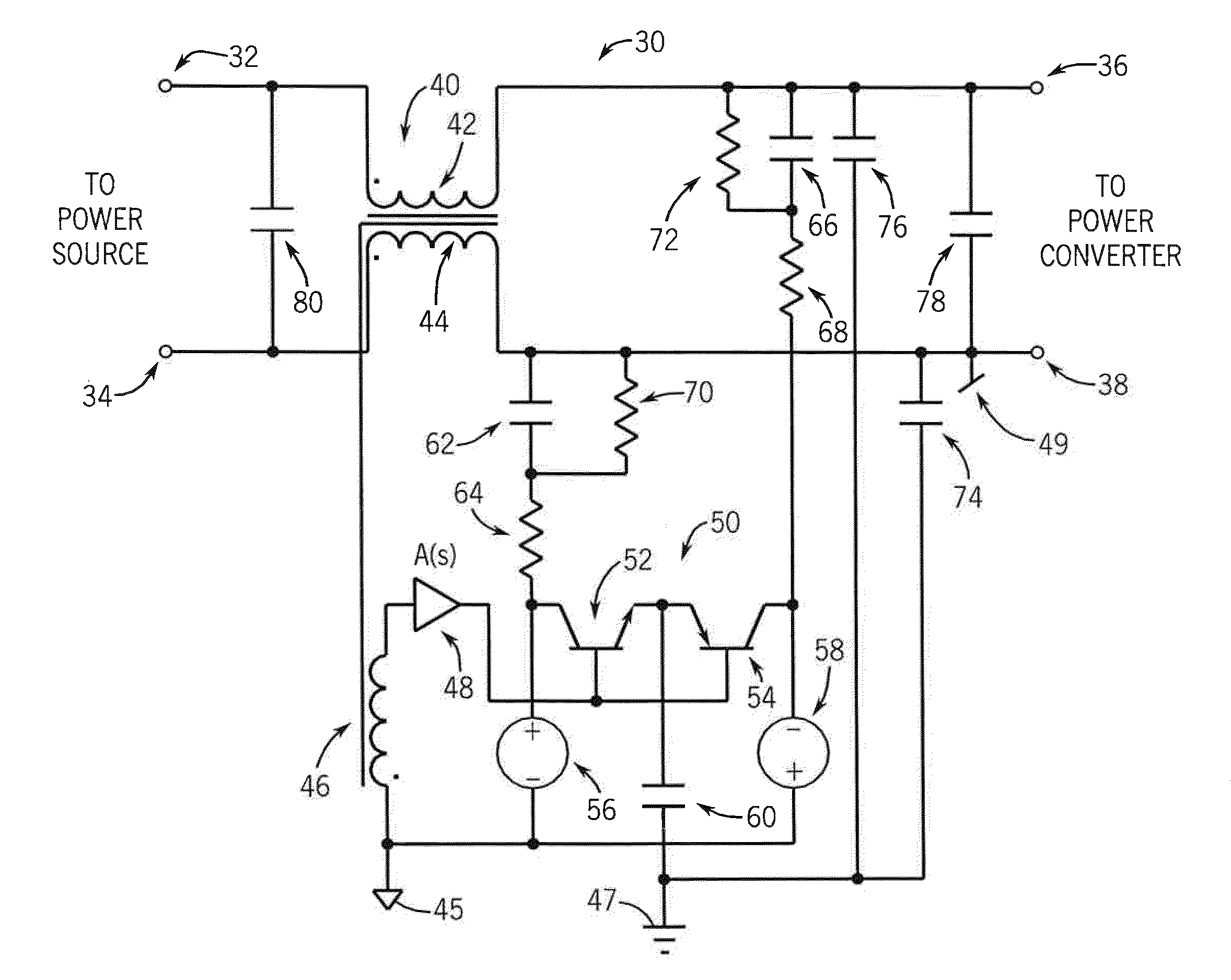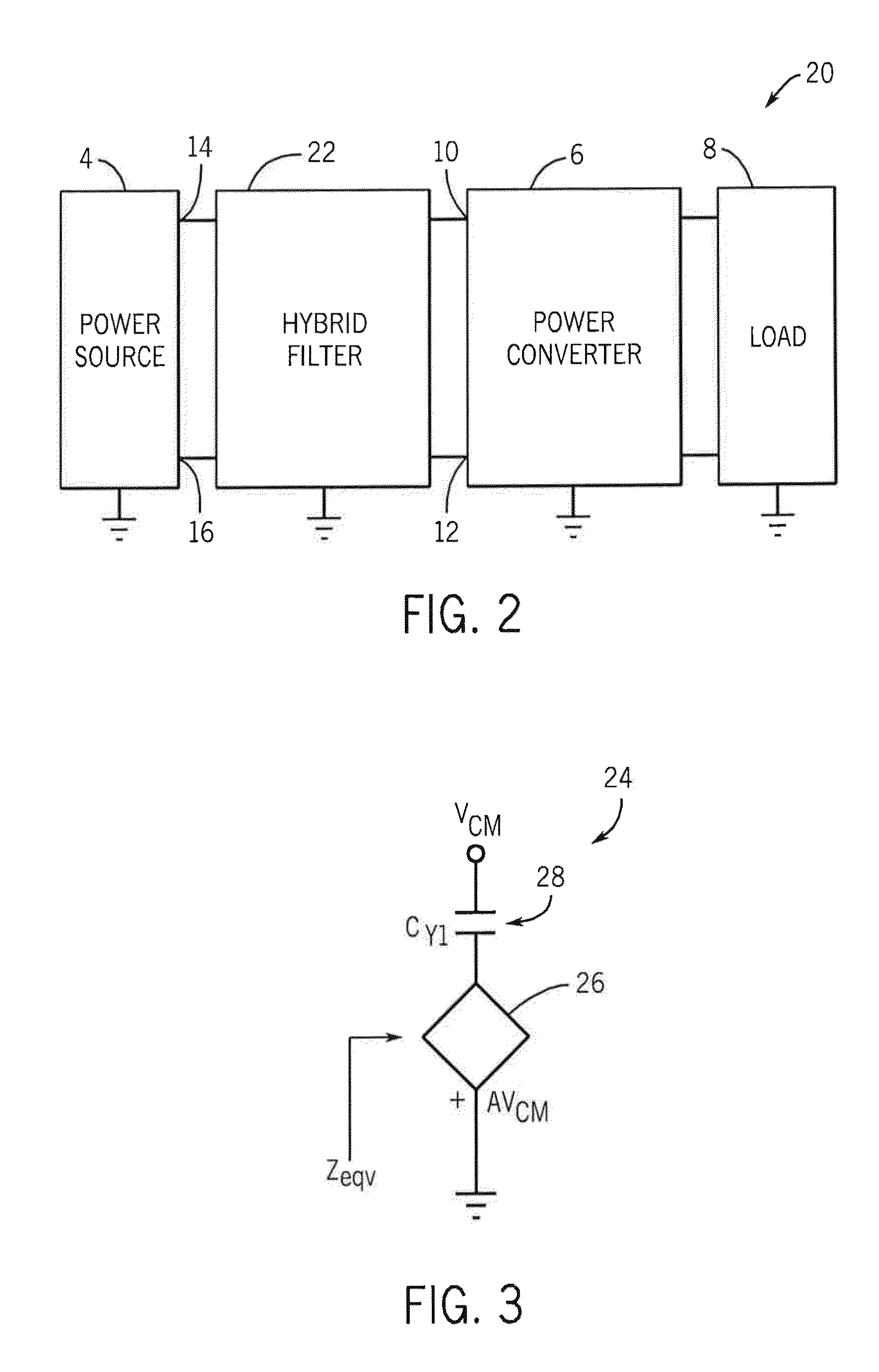Apparatus and method for reducing EMI generated by a power conversion device
a power conversion device and emi reduction technology, applied in the direction of pulse manipulation, pulse technique, dc circuit to reduce harmonics/ripples, etc., can solve the undesirable side effects of generating electromagnetic interference in the switch power converter, the effect of enhancing emi reduction, and effectively enabling active control and boosting of a common mode capacitan
- Summary
- Abstract
- Description
- Claims
- Application Information
AI Technical Summary
Benefits of technology
Problems solved by technology
Method used
Image
Examples
Embodiment Construction
[0022]Referring to FIG. 2, an exemplary improved version of the power system 0 of FIG. 1 is shown as a power system 20. Although the exemplary power system 20 includes the power source 4, the switching power converter 6 and the load 8 of FIG. 1, the power system 20 in place of the filter 2 instead include an improved hybrid filter 22, in accordance with at least some embodiments of the present invention. As described above with respect to the power system 0, the switching power converter 6 includes first and second input terminals 10 and 12, respectively, and the power source 4 includes first and second output terminals 14 and 16, respectively, to which the hybrid filter 22 is coupled. Depending upon the embodiment, the hybrid filter 22 can be embedded within or as part of the switching power converter 6 or alternatively be a device that, while coupled to the power converter, is nevertheless structurally independent of the power converter 6. In at least some embodiments in which the...
PUM
 Login to View More
Login to View More Abstract
Description
Claims
Application Information
 Login to View More
Login to View More - R&D
- Intellectual Property
- Life Sciences
- Materials
- Tech Scout
- Unparalleled Data Quality
- Higher Quality Content
- 60% Fewer Hallucinations
Browse by: Latest US Patents, China's latest patents, Technical Efficacy Thesaurus, Application Domain, Technology Topic, Popular Technical Reports.
© 2025 PatSnap. All rights reserved.Legal|Privacy policy|Modern Slavery Act Transparency Statement|Sitemap|About US| Contact US: help@patsnap.com



